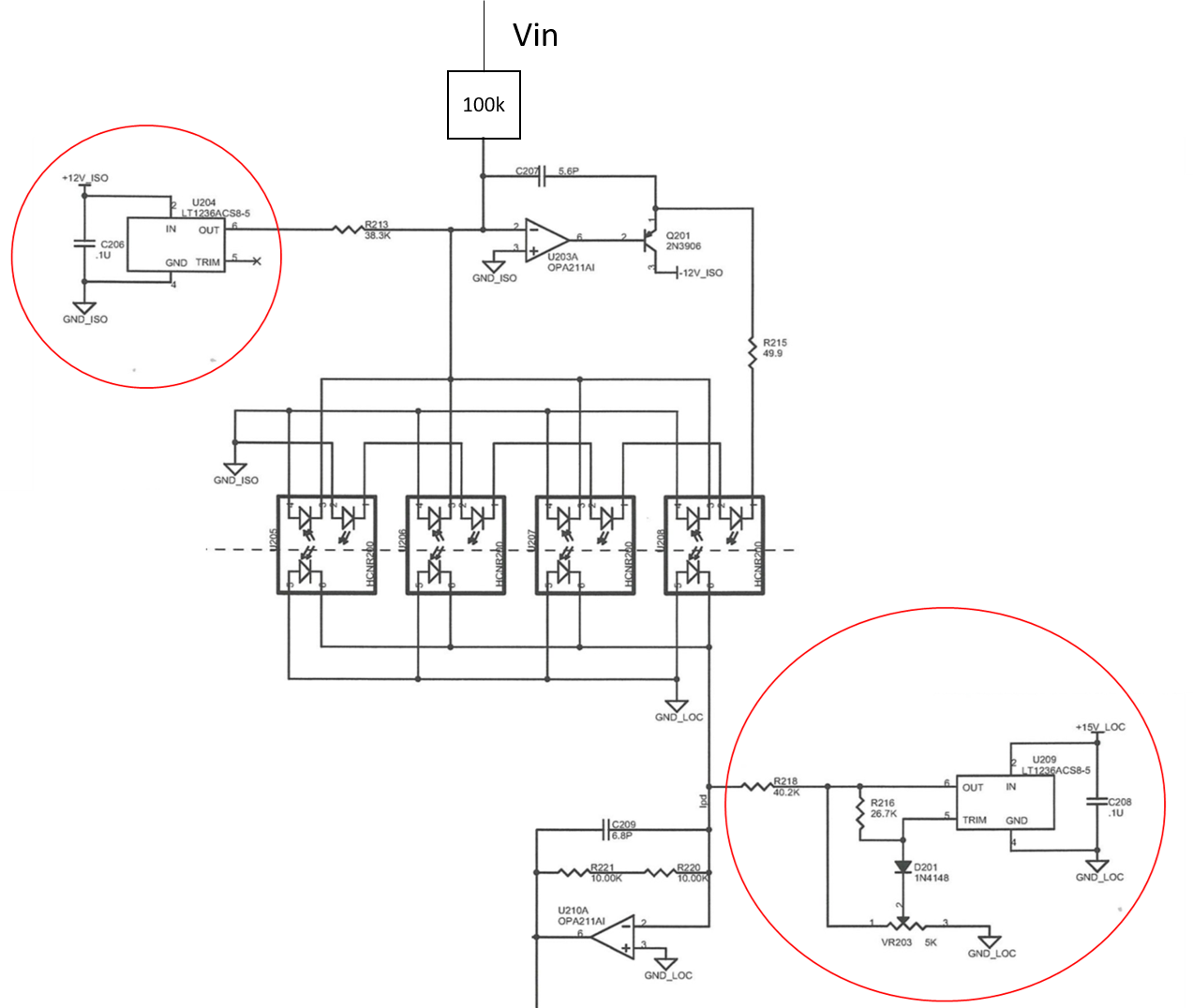I am studying the schematics of an analog isolator with variable gain SIM 984 from SRS, the isolator is bipolar and can handle positive and negative voltages.
In the isolation part of the schematics (see picture below), the author uses two voltage references circled in red.
Having read the manual of the analog optocoupler used here (HCNR200) I think that these are used as current sources and make the whole device effectively bipolar. Their role I think is to make sure that the current flowing through the photodetectors on the input part is always positive. See p.19 of the HCNR manual (https://docs.broadcom.com/doc/HCNR200-HCNR201-High-Linearity-Analog-Optocouplers-DS) where it reads:
The circuit in Figure 15a uses two current sources to offset the signal so that it appears to be unipolar to the optocoupler. Current source IOS1 provides enough offset to ensure that IPD1 is always positive. The second current source, IOS2, provides an offset of opposite polarity to obtain a net circuit offset of zero. Current sources IOS1 and IOS2 can be implemented simply as resistors connected to suitable voltage sources.
The thing is, on the input side for example, the voltage V_in can reach up to +/-1000V according to my understanding of the device, and given the input resistor the current can reach +/-10mA. So if say the current reaches -10 mA the voltage reference must source 10 mA for the current to stay positive, this is because I am assuming the op amp to be ideal and that no current flows into the inputs. But at best the current sourced by the voltage reference is 5/38300<<10 mA. So how does this work ? Am I completely mistaken in the role of the voltage references ?
The full schematics can be found on (https://xdevs.com/doc/Stanford_Research_Systems/SIM900/sim984_sch.pdf)


